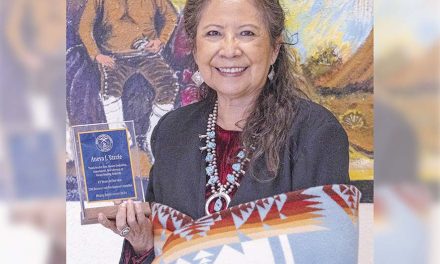
Penalties increased for dog attacks
WINDOW ROCK
The rampant stray dog population on Navajo Nation has grown to 250,000 and the Navajo Nation Council amended Title 17 of the criminal code to address dogs running at large and to establish criminal penalties for vicious dog attacks.
The amendment to Title 17 also includes making it a criminal nuisance for a person to allow a dog to run at large if that dog injures or kills someone, and would give any law enforcement officer the authority to destroy dogs that are running at large and are deemed a danger to the public.
The amendments enact penalties of a minimum of 30 days in jail and a $1,000 fine for each offense, and require the offender to pay $6,000 in restitution to victims.
The action was taken through an emergency legislation after the recent death by an apparent vicious dog attack in Fort Defiance. This deadly incident demonstrates the current danger to Navajo Nation residents and visitors by dog packs, according to the legislation.
“We have a dog problem on the Navajo,” said Delegate Raymond Smith. “There’s been several incidents within the Navajo Nation regarding dog mauling, property damage. We need to enforce and prevent any future fatalities regarding feral dogs.”
During a May 24 Law and Order Committee meeting, Kevin Gleason, Animal Control manager, explained there has been incidents in Dilkon and Ramah involving children attacked by dogs.
Gleason said a total of six deaths involving dog packs and incidents where people had been mauled to the point of losing limbs, ears, and arms, have happened.
Currently the minimum fine for animal violations is $50 and maximum is $500, and that usually is for vicious animals, dog bites, livestock damage, unlicensed animals or no animal restraint.
There is nothing criminally in Title 17 dealing with animal control; all of the laws enforced are under Title 13.
“Our current situation on Navajo is we have 100-plus communities but we have only five animal control officers to address the 100-plus issues,” said Gleason. “This year they have 280 bite cases on Navajo. They’ve impounded over 5,000 cases involving 10,000 animals.
“The dog population is just too large for Navajo and people are not being responsible for their pets,” he said. “We don’t have the staff to sufficiently be proactive with animal control. We are being reactive to what calls we are getting right now.”
But proving ownership of these dogs creates a problem in getting any type of restitution or seeking justice. Even if dogs are supposed to be registered to their owners, in reality that is rarely the case.
If dogs are owned but owners have not registered their dogs, proving this in other ways will have to happen. If feral dogs are to blame, pressing charges won’t be placed on anyone because of no ownership.
Delegate Carl Slater said enacting something new to Title 17 should go through the regular committee process so they could be afforded the chance to speak with the prosecutor’s office, Department of Justice, Animal Control program and victims.
“I’ve been attacked by dogs … I know first-hand what that experience is like,” said Slater, referring to a dog attack he encountered in Kayenta that he had to get treatment for. “Walking around a housing complex, next thing you know you’ve got animals hanging out of you. It’s a really disturbing experience.”
He also said the main reasons behind this uptick in vicious dogs is lack of enforcement because of lack of funding and COVID-19, which Gleason had stated is a reason for the rise in the dog population.
“I urge us not to think about over-legislating … remember there will be unintended consequences to the actions that we take,” said Slater.
Over 3,000 individuals are treated each year at hospitals and clinics for animal attacks and bites. The majority of victims are children and elderly. Some of these victims are transported to other hospitals for special treatment, according to Animal Control.
Animal Control also stated that it needs additional funding to accomplish the following:
• Build and establish adequate comprehensive animal control centers in each agency that will serve as an animal shelter and adoption/vaccination centers;
• Reduce the number of bite cases that occur to children and elderly;
• Provide adequate services to BIA schools/housing, IHS hospitals/housing, other schools/housing, and chapter communities;
• Reduce the number of livestock loss/damage cases by dog attacks;
• Develop an education program to address responsible pet care and an awareness of proper animal ownership;
• Address complaints received from guests/visitors regarding stray dogs and ‘road kills’ they see when visiting the Navajo Nation;
• Address the over-population of dogs and cats within the Navajo Nation;
• Promote spay/neuter clinics; and enforce Navajo Nation animal laws.
This legislation passed 21-0 and President Jonathan Nez has 10 days to consider whether to sign or veto.







 Highway 264,
Highway 264, I-40, WB @ Winslow
I-40, WB @ Winslow